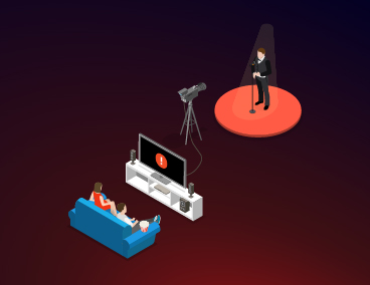Google announced yet another submarine cable project. Named Dunant, after the founder of the Red Cross, this will be the first private transatlantic submarine cable operated by a single company. This cable will run between Virginia, USA and France and is expected to be in service by 2020. While they did not announce the capacity of this cable, the Marea cable launched recently by Microsoft and Facebook, linking Virginia with Spain, has a capacity of 160 Tbps.

One of the most advanced and highest capacity cables to cross the Atlantic, Marea connects Virginia Beach, VA to Bilbao, Spain, a route spanning over 4000 miles. Google has also invested in 11 submarine cable projects in the past decade.
Here's a list of major submarine cables owned or partly owned by content providers:

Most new submarine cables are being commissioned by tech giants like Facebook, Amazon, Microsoft and Google. Research firm Telegeography estimates that in 2017 over half of the total transatlantic and transpacific bandwidth demand came from content providers. So what’s going on?
Historically, submarine cables were the domain of large telecom companies and were typically deployed and operated by international consortia that carved out the capacity between various providers. Prior to the 1990s, these mostly carried voice calls, but with the rise of the Internet, more and more of this capacity was used by large global transit providers like Teleglobe, UUNet and AT&T to carry Internet traffic. In the late 2000s and early 2010s, along came the tech giants like Google, Facebook, Netflix and Amazon that started to dominate our consumption of the Internet across both consumer and enterprise users. In an effort to improve user experiences and reduce page load times from all over the globe, the content providers began deploying data centers and cache servers closer to the users. But how did the content actually move between all these data centers? This is where the content delivery networks (CDNs) come into play.
Initially, the tech giants had to purchase transit capacity from global transit providers like AT&T and Tata. However they quickly realized the Internet was a best effort network that represented a huge risk to their business. They began to operate their own global backbones. Microsoft was one of the first non-telecom companies to do this, with the Microsoft Network (MSN). These backbones initially operated on leased fiber on the same cables that the telecom companies used. However, as the tech giants grew larger and consumed more and more of the fiber capacity, they began laying their own fiber – first terrestrially and eventually under oceans.

All the dark blue nodes are part of Microsoft’s Network, while the light nodes are the public Internet.
Google and Microsoft each operate one of the largest global networks in the world today. Facebook is not too far behind, and Amazon has also recently made all their data center regions routable over their global backbone, essentially allowing customers to use their network. Another factor influencing this is that submarine cables require large amounts of capital upfront, with long payback periods. With well over $500 billion in surplus cash, the tech giants are in a great position to make these long term investments.
Internet pioneer and researcher Geoff Huston was in our office recently and gave a talk on the Death of Transit. He argues that content now dominates our consumption of the Internet, and that traditional transit networks will shrivel and disappear, leaving the Internet as a disconnected set of content islands. The recent net neutrality rule changes may accelerate this evolution.

So where does this leave all the other digital businesses that cannot afford to lay their own fiber? The Internet has been a fantastic channel of commerce, instantly connecting a business with hundreds of millions of consumers, and has contributed significantly to the global economic boom in the 1990s and 2000s. However that channel is about to look a lot like your local freeway at 8am on a weekday, with everybody competing for the same limited bandwidth.

It’s all the more important to see and understand the service delivery networks that sit between your and your users, and to measure digital experience from the users’ perspective. ThousandEyes has monitoring points in 160+ cities across the globe that give you this detailed perspective, so you can see exactly what your customers see, and the networks they use to connect to your services. Sign up for a free trial and instantly see what CDNs your services depend on.


